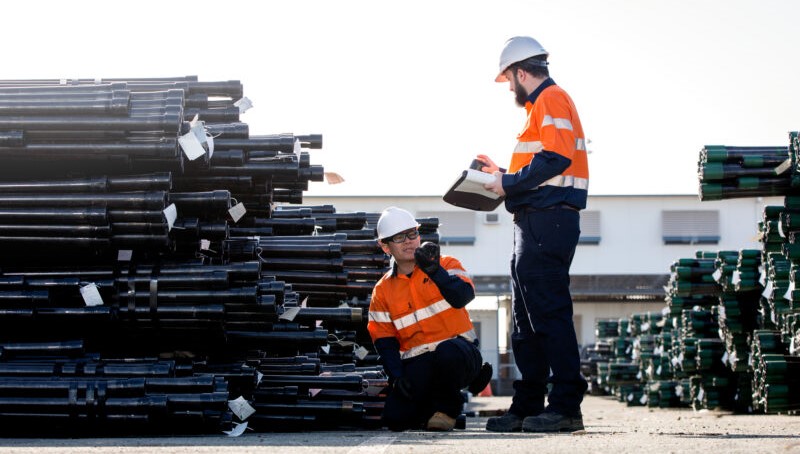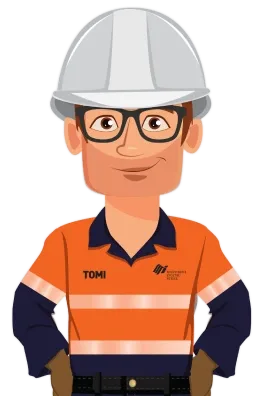
In your workplace or business, you may have heard or shared phrases like “plan, do, check, act” or “say what we do, do what we say, prove it, improve it”. Though simple, these statements speak to the underlying aims of a quality management system (QMS).
In fact, they provide a useful context through which we can examine the nature of work and business, the importance of finding the right inputs (employees or raw materials), the effect this has on outputs (products or services), and how this impacts stakeholders and their satisfaction.
So what is a QMS and how does it relate to the Oil Country Tubular Goods (OCTG) industry? Let’s begin with a definition.
What is a quality management system?
A QMS is defined as a holistic approach to ensuring products and services meet regulatory and customer requirements while also working to improve the operational performance of the organisation, as measured by established quality objectives and key performance indicators (KPIs). This approach includes the activities of quality assurance and quality control and ultimately aims to eliminate or minimise risk throughout the operational activities of the organisation.
The rationale for quality management in an organisation is that it delivers tangible benefits. Some examples include increased employee productivity and efficiency, increased customer satisfaction, reduced financial exposure or loss, and increased financial returns. All of these metrics are specific and measurable, making it easy to evaluate them, track their performance over time, and identify trends or unexpected movements.
Standards
There are three universally accepted quality management standards, which are:
- ISO 9001:2015, which specifies the requirements for a QMS in general.
- API specification Q1, which establishes the minimum QMS requirements for organisations that manufacture products or provide manufacturing-related services. It applies to manufacturers of oilfield and line pipe products, including the OCTG industry.
- API specification Q2, which is for oilfield service providers and service-related products.
Elements 1-5 of an OCTG quality management system
1. Documentation requirements and record control
Control of the QMS processes and related documentation consists of internal policies and procedures, as well as industry standards that the organisation must adhere to. These ensure that employees have access to standardised, approved, and updated internal and external procedures, including instructions for their respective tasks and responsibilities. This helps to eliminate confusion and increase efficiency.
Documents that have been identified by management to deliver the required outcomes of the business management system shall be prepared, reviewed, approved, issued, controlled, and maintained.
To ensure this is the case, the organisation needs to keep records of activities, store them, and ensure the records are accessible when and where required by either employees or third parties. It must also be assured that these documents are the latest approved version and are safeguarded against unintentional or unapproved changes or alterations.
2. Human resources, training and competencies
Employees are selected based on the extent to which their experience aligns with the expectations, qualifications, and credentials for each position. As such, these criteria need to be clearly defined by human resources (HR), both for the incumbent and for the manager who is responsible for hiring or onboarding them to ensure they fit the role and can be effective and productive.
From preparing job descriptions and selecting employees to providing direction on onboarding and the assignment of the employees’ training requirements, HR plays a crucial role in ensuring new starters are ready for work. By the same token, the competency of existing employees must be assessed at regular intervals to ensure their training has been effective and adequate. Enabling employees to receive additional skills and development supports the continual improvement of both the employee and the organisation as a whole.
3. Design and development
The first step of design and development is contract review, a process that examines what customers require from the organisation and their specific expectations and KPI’s, either on a case-by-case basis or over long-term engagements. Inputs for design and development shall be identified and reviewed for adequacy and completeness and could include functional and technical requirements.
The definition of the relevant products or services also needs to include all applicable regulatory, internal and customer requirements. Communication of a finalised product or service design must then be delivered, followed by an independent review of that development or design, before final approval is given (when needed).
These activities are controlled and reviewed to make sure that the outputs comply with the specified requirements and inputs. Failure to do so will lead to product or service nonconformities. To ensure the design and development information is available to those who need it, required records are generated, stored, made accessible and used for validation and verification throughout the process.
4. Risk assessment management
Risk assessment management and change management start with a review of the activities that are being performed by the organisation, including the identification of risks that may or may not be present during each of those activities. The results of this review will inform the design or creation of actions to manage identified risks or, if necessary, manage process changes.
Contingency planning is required for risks that cannot be fully mitigated or risks that may arise despite mitigation activities being undertaken. Communication and review of the effectiveness of risk mitigation activities is the final step in the risk management process.
The interaction between risk, assessment, change management and contingency planning recognises that not all risks can be eliminated, despite an organisation’s best efforts. As such, the goal of a strong QMS is to ensure that the potential for loss and disruption is minimised by eliminating risks wherever possible and reducing their potential impact if they cannot be completely mitigated. This applies to operational performance, the supply chain and its vendors.
5. Purchasing and vendor management
The first step in purchasing and vendor management is to review the organisation’s required products or services and then identify the vendors that may be suitable to provide these. The lack of control that an organisation has over its vendors’ activities and their products or services typically equates to a degree of risk for both the organisation and, by extension, its customers.
However, steps can be taken to control the magnitude of this risk. For example, vendor control activities such as capability assessments, audits and assessments, and a controlled approved vendor list ensure that only qualified and effective vendors are used in the supply chain.
Once this listing has been established, purchases of products or services should be clearly defined in terms of all requirements to make sure that timely, reliable, and suitable receipt occurs. Upon receipt, there must be verification of purchased products or services and, if required, reevaluation of vendors. This is all to ensure that only qualified and suitable products or services are being accepted and provided to customers.
In part two, we will continue to explore the remaining elements of a QMS, before finishing with a deeper exploration of the benefits afforded by establishing a rigorous QMS.
We ensure that every product listed for purchase on Pipesales includes all relevant information needed for you to determine whether it aligns with your QMS, including grade and condition. Explore our global marketplace for your next inventory purchase.





